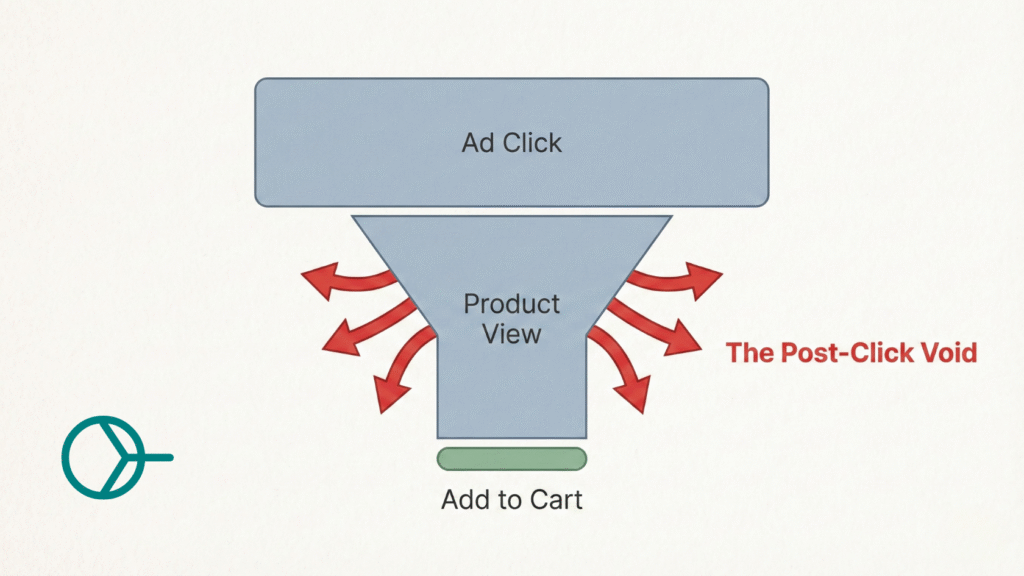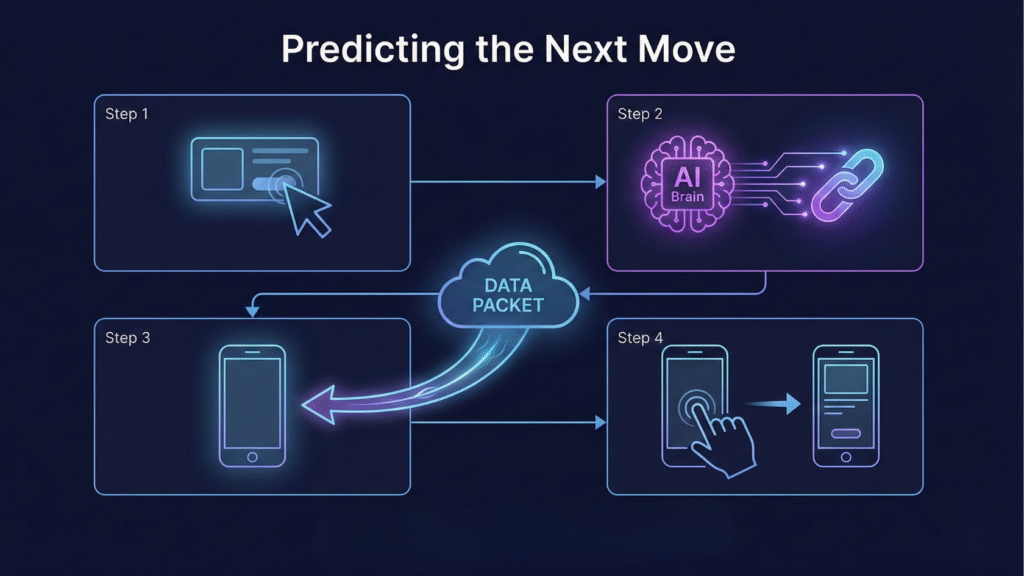You know the feeling. It’s 10 AM, and you’re staring at your Shopify dashboard.
The traffic is there. Your Meta ads are firing, the creative is solid, and the Click-Through Rate (CTR) is actually better than last week. People are landing on your site.
But they aren’t buying.
If you’re like most growth-obsessed founders in the Indian D2C fashion space, your first instinct is to blame the Landing Page. Maybe the hero image isn’t popping? Maybe the “Shop Now” button needs to be bigger? So, you tweak. You optimize. You re-run the campaign.
And the results stay the same: High traffic. High bounce rates. Low conversion.
Here is the hard truth that most agencies won’t tell you: The problem isn’t your Landing Page. It’s what happens after the first click.
It’s called the Post-Click Problem, and for image-heavy fashion brands selling to mobile-first users in India, it is the single biggest leak in your sales funnel.
The “Second Click” Drop-Off
Let’s walk through the journey of a typical customer-let’s call her Ananya.
Ananya sees your ad on Instagram for a new floral maxi dress. She clicks. She lands on your collection page. So far, so good. You paid ₹40 for that click, and you got it.
But now, Ananya wants to browse. She clicks on a specific dress to see the details. She taps a different color variant. She hits “Back” to look at another style.
This is the Post-Click phase. This is where browsing happens. And in the world of fashion e-commerce, browsing is the prerequisite to buying.
If that transition from the Collection Page to the Product Detail Page (PDP) takes even 2 seconds too long, Ananya is gone. She’s used to the instant fluidity of Instagram and Myntra. If your Shopify store feels “sticky” or laggy between pages, the impulse to buy evaporates.
You didn’t lose her because she didn’t like the dress. You lost her because the experience of shopping felt like work.

Why PageSpeed Insights is Lying to You
“But wait,” you say. “I ran my site through Google PageSpeed Insights, and my score is green!”
This is where things get tricky. Tools like PageSpeed Insights and Lighthouse are fantastic, but they primarily measure Lab Data.
Lab Data simulates a “cold load”-a new visitor landing on your site for the very first time. It checks how fast that single page loads under controlled conditions.
But real users generate Field Data (measured via the Chrome User Experience Report, also known as the Chrome UX Report, or CrUX for short). Real users don’t just sit on one page; they navigate. They click through your site.
Here is the disconnect: Your site might load the initial Homepage in 1.5 seconds (Good Score). But when a user on a 4G connection in a Tier-2 city clicks a product link, the browser has to fetch a whole new set of high-resolution images, scripts, and data. If that subsequent navigation lags, your Lab Score remains green, but your user is seeing a white screen.
In the fashion industry, where visual fidelity is everything, high-resolution images are non-negotiable. You cannot compromise on image quality, but those heavy assets are causing friction in the post-click journey.

The “Mobile India” Challenge
If you are selling in India, you are selling to a mobile-first, and often mobile-only, audience. While 5G is rolling out, a vast majority of your potential customers in Jaipur, Lucknow, or Hyderabad are switching between stable Wi-Fi and fluctuating mobile data.
When a user is on a slightly unstable connection, the latency between clicks becomes painful.
- The Expectation: They want the “Instant App” feel (like switching tabs on Instagram).
- The Reality: They get the “Website Loading” feel (spinner, white screen, layout shift).
Research from web.dev indicates that ensuring a good user experience involves minimizing these delays. If your store feels slow, users perceive the brand as “cheap” or “untrustworthy.”
The Solution: Stop Reacting, Start Predicting
So, how do you fix the Post-Click Problem without hiring a dev team to rewrite your entire codebase?
You need to stop reacting to user clicks and start predicting them.
This is where AI Predictive Prefetching changes the game. Unlike standard caching (which saves a page after you visit it), prefetching works before the user clicks.
How Smart Prefetch works:
- Analyze: The AI analyzes user behavior patterns on your page (cursor movement, hover time, scroll velocity).
- Predict: It determines, with high accuracy, which link the user is about to click next (e.g., the third dress in the grid).
- Fetch: It quietly downloads the assets for that next page in the background while the user is still looking at the current page.
- Serve: When the user actually clicks, the content is already there. The page loads instantly.

It’s like a waiter at a fine-dining restaurant pouring your water the second your glass is empty, without you having to wave them down. It removes the friction.
The Impact on the Funnel
When you eliminate the wait time between pages, you aren’t just “speeding up the site.” You are fundamentally changing the user psychology.
- Higher Pages Per Session: When browsing is instant, users look at more products.
- Reduced Bounce Rate: They don’t get frustrated and leave.
- Higher Conversion: The path from “I like this” to “Add to Cart” is frictionless.

For a founder like “Rohan”-who cares about ROAS and Profitability-this is the missing link. You are spending money to get them to the door. Smart Prefetch ensures they stay inside the shop.
Actionable Takeaway: Audit Your “Second Click”
Don’t just look at your homepage speed. Today, do this:
- Open your website on your phone (disconnect from Wi-Fi, use mobile data).
- Click on a collection.
- Quickly click on a product.
- Count the seconds. One… two… three…
- If you saw a white screen or a spinner, you are losing money.
The Post-Click Problem is invisible on many dashboards, but it is very visible in your bank account.
If you are ready to stop the traffic leak and start seeing the ROI you deserve, you need to dive deeper into the economics of speed.
Stop guessing. Start converting.
Stop the Traffic ROI Crisis in D2C Fashion & Apparel
Learn exactly how top Indian D2C brands are turning cash burn into capital efficiency.
